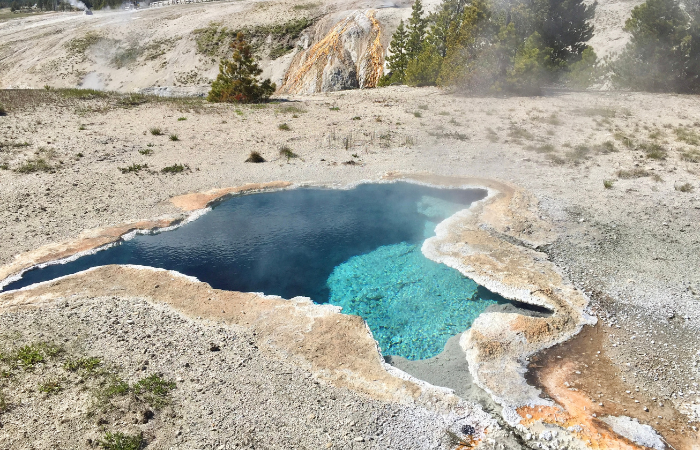Silk Road Holidays Journey Through History and Culture

Silk Road holidays Few routes in history have captivated the imagination quite like the Silk Road. Stretching over 4,000 miles from the bustling markets of China to the vibrant cities of the Mediterranean, the Silk Road was not only a network of trade routes but a conduit for the exchange of ideas, cultures, and histories that shaped entire civilizations. Today, travelers have the opportunity to follow in the footsteps of ancient traders and explorers on Silk Road holidays, uncovering the hidden treasures and enduring legacies of this legendary path.
Embarking on a journey along the Silk Road is more than just a trip—it’s an immersion into a world where East meets West, where the past whispers through the ruins of once-great cities and the deserts echo the footsteps of caravans long gone. From the awe-inspiring architecture of Samarkand to the mystical landscapes of the Gobi Desert, the Silk Road offers experiences that are as diverse as they are enchanting. Here’s what awaits those who set out on Silk Road holidays, and why this journey through history and culture is truly one for the ages.

1. The Ancient City of Xi’an: Gateway to the Silk Road
Xi’an, the starting point of the Silk Road, is a city where China’s imperial past comes to life. Once known as Chang’an, this city was the capital of several of China’s most powerful dynasties and served as a cultural and commercial hub for traders heading west. It’s in Xi’an that many Silk Road holidays begin, offering travelers a glimpse into the grandeur of ancient China.
No trip to Xi’an would be complete without visiting the Terracotta Army, a UNESCO World Heritage site that showcases thousands of life-sized sculptures of soldiers, horses, and chariots, created to accompany China’s first emperor, Qin Shi Huang, into the afterlife. But beyond this famous site, Xi’an has much more to offer. The city’s bustling Muslim Quarter is a testament to the cultural melting pot that the Silk Road fostered, with its narrow streets filled with vendors selling everything from hand-pulled noodles to intricate handicrafts. This blend of Chinese and Islamic cultures is a powerful reminder of the Silk Road’s far-reaching influence.
2. The Deserts and Dunes of the Gobi
Continuing westward, the vast Gobi Desert unfolds like a scene from an epic film, its golden sands stretching out to the horizon. For centuries, this inhospitable terrain challenged even the hardiest of travelers. Yet today, the allure of the Gobi remains as strong as ever, drawing adventurers who seek the thrill of navigating this stark, otherworldly landscape on Silk Road holidays.
Riding camels through the dunes, travelers can experience a small taste of what ancient traders faced. The Gobi, however, is not just a barren expanse. Hidden among the sand dunes are secrets waiting to be discovered, like the Flaming Cliffs, where some of the world’s most important dinosaur fossils have been unearthed. There are also oasis towns such as Dunhuang, where the remarkable Mogao Caves offer an extraordinary collection of Buddhist art, created over a millennium by artists and monks who passed through on their way to and from the West.
For those who crave wide-open spaces and an intimate encounter with the forces of nature, the Gobi Desert is a highlight of any Silk Road holiday. The sense of isolation, combined with the beauty of the shifting sands and the ever-changing light, makes this one of the most unforgettable stretches of the journey.
3. Uzbekistan: The Jewel of Central Asia
As you travel deeper into Central Asia, Uzbekistan stands out as a shimmering jewel on the Silk Road. The cities of Samarkand, Bukhara, and Khiva were once the beating heart of the Silk Road trade network, and today they remain some of the most visually stunning destinations in the world. These cities boast breathtaking Islamic architecture, with grand mosques, mausoleums, and madrasahs adorned with intricate tilework in shades of turquoise, gold, and lapis lazuli.
Samarkand, perhaps the most iconic of Uzbekistan’s Silk Road cities, is synonymous with majesty and mystery. Its Registan Square, flanked by three enormous madrasahs, is often considered one of the most beautiful architectural ensembles in the world. This historic square once served as the commercial and cultural center of Samarkand, where traders from across the globe would gather to buy and sell goods, and where scholars would share knowledge. Today, standing in Registan Square, it’s easy to imagine the vibrant, cosmopolitan life that once thrived here.
In Bukhara, travelers are transported to a world of ancient caravanserais, winding alleyways, and centuries-old bazaars. Known as the “Pillar of Islam,” Bukhara was not only a key stop on the Silk Road but also one of the most important centers of learning in the Islamic world. Walking through the city, with its peaceful courtyards and towering minarets, you can almost feel the presence of the poets, philosophers, and scholars who made Bukhara their home.
Khiva, often the quietest of the three, is a well-preserved fortress city that feels like a step back in time. Its winding streets, enclosed by towering mud-brick walls, are filled with beautifully restored palaces, mosques, and minarets that offer a glimpse into the city’s past as a center of trade and culture.
For those seeking a rich cultural experience, Uzbekistan is an essential stop on any Silk Road holidays. The cities here are not just historical artifacts but living, breathing places where the past and present come together in an unforgettable way.
4. Kyrgyzstan and the High Mountain Passes
One of the more rugged and adventurous parts of the Silk Road lies in Kyrgyzstan, where snow-capped peaks, crystal-clear lakes, and alpine pastures dominate the landscape. The Silk Road caravans that traversed this region faced some of the most treacherous mountain passes in the world, including the fabled Tien Shan Mountains.
Today, Kyrgyzstan offers a unique contrast to the desert landscapes and ancient cities found elsewhere along the Silk Road. On Silk Road holidays through Kyrgyzstan, travelers have the opportunity to experience the nomadic traditions that have been preserved here for centuries. Staying in a traditional yurt and riding horses through the mountain valleys, visitors can immerse themselves in the same way of life that Silk Road travelers would have encountered long ago.
One of Kyrgyzstan’s most stunning locations is Lake Issyk-Kul, the second-largest alpine lake in the world. Surrounded by the towering Tien Shan Mountains, the lake’s deep blue waters offer a striking contrast to the snow-capped peaks. It’s a place of quiet beauty and reflection, far removed from the hustle and bustle of the markets and cities that mark other stops along the Silk Road.
Kyrgyzstan’s wild landscapes and the warmth of its nomadic people make it an essential part of any Silk Road holidays, especially for those looking to connect with the natural world and the timeless traditions of Central Asia.
5. Iran: The Cultural Crossroads of the Silk Road
The Silk Road’s influence on Iran is undeniable, as the country sits at the crossroads between East and West. The cities of Iran were not only central to trade but also to the exchange of ideas, art, and religion. For those seeking to understand the full breadth of the Silk Road’s impact on world history, Iran is an essential destination on Silk Road holidays.
Isfahan, often referred to as “Half the World” due to its unparalleled beauty and cultural significance, is one of Iran’s crown jewels. The city’s Imam Square, a UNESCO World Heritage site, is one of the largest public squares in the world and is surrounded by some of the most exquisite examples of Islamic architecture. From the stunning Imam Mosque with its delicate tilework to the majestic Ali Qapu Palace, Isfahan offers a feast for the eyes and the soul.
Tehran, Iran’s bustling capital, provides a more modern contrast but is home to the National Museum of Iran, where travelers can explore a treasure trove of ancient artifacts that trace the history of the Silk Road through the country.
Further along the route lies Shiraz, a city known for its poets, gardens, and wine. Here, travelers can visit the ancient ruins of Persepolis, once the ceremonial capital of the Persian Empire and one of the most significant archaeological sites in the world.
Iran’s rich history, combined with the warmth and hospitality of its people, make it a fascinating and rewarding stop on Silk Road holidays. The stories of this ancient land are woven into the very fabric of the Silk Road itself, making it a place where travelers can truly feel the weight of history.
6. Turkey: Bridging Continents and Cultures
As the Silk Road’s final stop before reaching Europe, Turkey holds a special place in the history of this ancient route. For centuries, the city of Constantinople (modern-day Istanbul) served as the gateway between Asia and Europe, and its importance to the Silk Road cannot be overstated. On Silk Road holidays, Turkey offers a stunning blend of Eastern and Western influences, as well as some of the most remarkable archaeological and cultural sites in the world.
Istanbul’s bustling Grand Bazaar, one of the oldest and largest covered markets in the world, is a living reminder of the city’s Silk Road legacy. Here, travelers can haggle for spices, textiles, and other treasures just as merchants did centuries ago. The city’s skyline, dominated by the Hagia Sophia and the Blue Mosque, speaks to its rich and diverse history as a crossroads of empires and religions.
Further afield, the ancient city of Ephesus provides a window into Turkey’s classical past, with its impressive ruins that once served as an important center for trade and commerce. Cappadocia, with its fairy-tale landscapes of rock formations and underground cities, offers a completely different but equally captivating experience.
Turkey’s diverse landscapes, from the rugged mountains of the east to the sparkling waters of the Aegean, make it the perfect end point for Silk Road holidays. It’s a land where history and culture blend seamlessly, offering travelers an unforgettable journey through time.
Silk Road holidays
A journey along the Silk Road is more than just a holiday—it’s a voyage through the very heart of human history and culture. From the deserts of China to the mountains of Kyrgyzstan, from the ancient cities of Uzbekistan to the bazaars of Istanbul, Silk Road holidays offer a tapestry of experiences that are as varied as the people and places that once thrived along this legendary route.
Travelers who embark on this journey are not merely visiting destinations; they are following in the footsteps of explorers, traders, and scholars who helped shape the world we know today. The Silk Road is a living reminder of our shared past, and for those willing to take the journey, it promises to be an adventure unlike any other.




